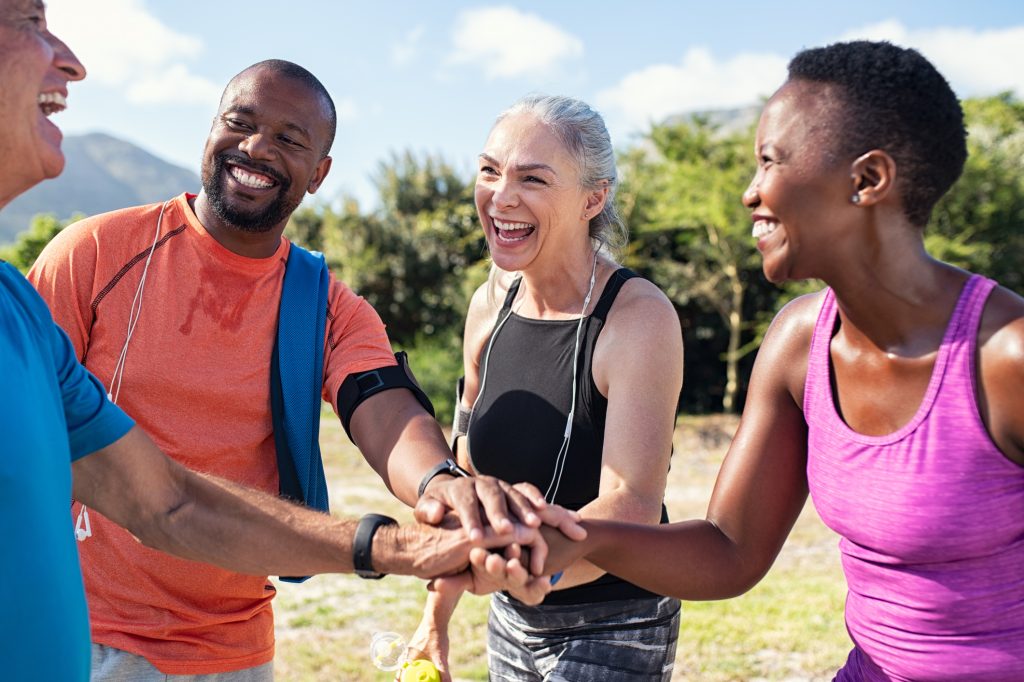
We’ve all heard that exercise is good for us, but it can be hard to commit to when our normal routines are disrupted. Over the course of a career spent working countless hours and long nights, we may have gotten somewhat out of shape, and this trend is likely to continue if we’re stuck inside more than usual. We might think it’s too late to get back into shape by the time we’re retired, or pointless to carve out time for physical activity, but this isn’t true. For starters, it could help you stay active for longer, and combat heart disease, diabetes, and high blood pressure[1]. Exercise may even help with conditions like Alzheimer’s and dementia[2]. Here are four types of exercise to help you get active and stay active.
Aerobic Exercises
If you’re trying to avoid the “quarantine 15” motivate, don’t procrastinate. Doing aerobic exercise for just 30 minutes a day could have an impact. Activities like walking, stationary cycling, and swimming are all good examples of ways to get your heart rate up. These exercises can also help increase the body’s ability to deliver oxygen and nutrients to tissues. If you get tired easily, breaking up the 30 minutes period into three 10 minute intervals is another option.
Walking
Walking is something you can do almost anywhere, and with no equipment necessary. It has so many benefits, from improved circulation, strengthened muscles[3], to getting you outside and enjoying the weather – or a mall if the weather outside isn’t so enjoyable. Going for a walk can even improve your mood since it releases endorphins to the body[4]. Walking with a friend can be a great way to catch up or a great way to get out of the house and be by yourself.
Stretches
It’s important to stretch before working out. Stretching helps warm up muscles and cool them down slowly, reducing the chance of injury. It’s also helpful for reducing soreness and stiffness and maintaining flexibility. Activities like yoga and Pilates focus on stretching and flexibility. Stretching can also allow you to take note of how your muscles feel, and any pain points, as well as limitations.
Balance Exercises
Improving your balance now may help to prevent falls when you’re older[5]. There are a few simple exercises you can do anywhere to practice your balance. One is standing on one leg – this sounds easy, but it’s surprisingly hard to do for 30 seconds. Another is to pretend you’re on a tightrope and walk heel-to-toe in a straight line while holding your arms straight out to the side. Looking at a fixed spot in front of you can help you balance.
We can focus on your financial well-being while you focus on your physical well-being. Retirement can be a time to focus on yourself, so take time to plan for the next 30 plus years of your life. We offer complimentary reviews so you can meet us and start the conversation about your retirement goals.
[1] https://www.cdc.gov/physicalactivity/inactivity-among-adults-50plus/index.html
[2] https://www.dementia.org.au/sites/default/files/helpsheets/Helpsheet-DementiaQandA08-PhysicalExercise_english.pdf
[3] https://www.arthritis.org/health-wellness/healthy-living/physical-activity/walking/12-benefits-of-walking
[4] https://www.arthritis.org/health-wellness/healthy-living/physical-activity/walking/12-benefits-of-walking
[5] https://www.cdc.gov/homeandrecreationalsafety/falls/adultfalls.html



